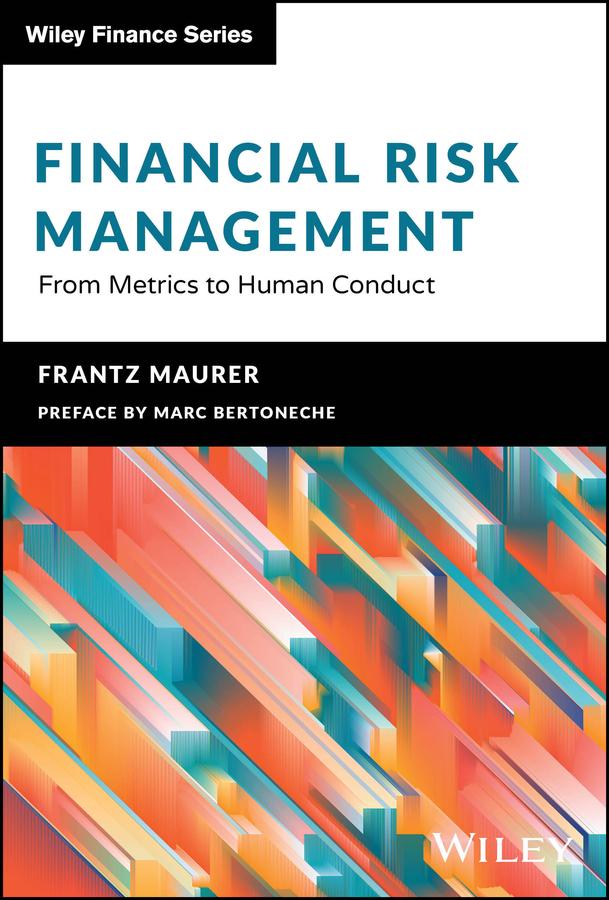
Zustellung: Do, 28.08. - Di, 02.09.
Versand in 2 Wochen
VersandkostenfreiBestellen & in Filiale abholen:
In the past decade around 70% of banks' operational losses have been connected to misconduct. Misconduct in banking creates a wide range of potential risks, from financial losses and adverse customer outcomes to weakening the resilience of individual institutions, damaging public trust in the banking sector and even contributing to systemic instability.
Effective risk management can no longer be exclusively about using complex mathematical models and equations to assess potential financial loss. Risk metrics will still be useful to quantify a potential loss for a given time horizon and confidence interval; however, these metrics are inefficient in identifying early warning signals of misconduct. A new approach must be taken to incorporate conduct risk assessment and management into the overall risk strategy.
This book is not a comprehensive review or catalogue of financial risk management tools and methods; instead, it focuses on the core methods that are actually used by professionals, such as historical Value-at-Risk and Expected Shortfall. Without any knowledge of probabilities, the reader can fully understand the meaning of these risk indicators and how to use them when faced with real life situations that require risk analysis and decision-making. The authors then show how to marry this simple approach to financial risk with a conduct risk index designed to benchmark the conduct of natural risk-takers like traders, and measure how far these risk-takers are from a responsible behavior. A ready-to-use version of this conduct risk index calculator is provided as an Excel add-in on the book's companion website.
Effective risk management can no longer be exclusively about using complex mathematical models and equations to assess potential financial loss. Risk metrics will still be useful to quantify a potential loss for a given time horizon and confidence interval; however, these metrics are inefficient in identifying early warning signals of misconduct. A new approach must be taken to incorporate conduct risk assessment and management into the overall risk strategy.
This book is not a comprehensive review or catalogue of financial risk management tools and methods; instead, it focuses on the core methods that are actually used by professionals, such as historical Value-at-Risk and Expected Shortfall. Without any knowledge of probabilities, the reader can fully understand the meaning of these risk indicators and how to use them when faced with real life situations that require risk analysis and decision-making. The authors then show how to marry this simple approach to financial risk with a conduct risk index designed to benchmark the conduct of natural risk-takers like traders, and measure how far these risk-takers are from a responsible behavior. A ready-to-use version of this conduct risk index calculator is provided as an Excel add-in on the book's companion website.
Inhaltsverzeichnis
Foreword ix
Acknowledgements xi
List of Acronyms and Symbols xiii
Introduction xvii
Part One Navigating Banking Regulation
Chapter 1 A Brief History of the Basel Framework 3
Chapter 2 The Basel I Regulatory Framework and the Cooke Ratio 7
Chapter 3 Amendment to the Basel I Framework to Incorporate Market Risks 15
Chapter 4 Implementation of the Basel II Framework 21
Chapter 5 A Guided Tour of the Basel III Framework 29
Chapter 6 Climate- Related Financial Risks 41
Part Two The Financial Risk Measurement Landscape
Chapter 7 Historical Approach to Risk 47
Chapter 8 The Gaussian Framework 61
Chapter 9 A Brief Overview of Monte Carlo Simulation 75
Chapter 10 Risk Contribution 79
Chapter 11 Shortcomings of Risk Metrics 93
Chapter 12 Ex- Post Evaluation of a Risk Model: Backtesting 103
Chapter 13 A Forward- Looking Evaluation of Risk: Stress Testing 109
Part Three Getting Conduct Risk to Scale
Chapter 14 The Big Picture of Conduct Risk 119
Chapter 15 Markers of Conduct Risk 123
Chapter 16 Worked Example 7: Building a Conduct Risk Score 127
Chapter 17 Fostering a Culture of Appropriate Conduct Outcomes 137
Chapter 18 Worked Example 8: Calculating a Risk-Taker's Conduct Risk Index 143
Chapter 19 Hot Questions Still Pending 159
Chapter 20 Understanding the Root Causes of Poor Conduct 163
Appendix 173
References 181
Contents 183
List of Figures 187
List of Tables 189
Index 191
Acknowledgements xi
List of Acronyms and Symbols xiii
Introduction xvii
Part One Navigating Banking Regulation
Chapter 1 A Brief History of the Basel Framework 3
Chapter 2 The Basel I Regulatory Framework and the Cooke Ratio 7
Chapter 3 Amendment to the Basel I Framework to Incorporate Market Risks 15
Chapter 4 Implementation of the Basel II Framework 21
Chapter 5 A Guided Tour of the Basel III Framework 29
Chapter 6 Climate- Related Financial Risks 41
Part Two The Financial Risk Measurement Landscape
Chapter 7 Historical Approach to Risk 47
Chapter 8 The Gaussian Framework 61
Chapter 9 A Brief Overview of Monte Carlo Simulation 75
Chapter 10 Risk Contribution 79
Chapter 11 Shortcomings of Risk Metrics 93
Chapter 12 Ex- Post Evaluation of a Risk Model: Backtesting 103
Chapter 13 A Forward- Looking Evaluation of Risk: Stress Testing 109
Part Three Getting Conduct Risk to Scale
Chapter 14 The Big Picture of Conduct Risk 119
Chapter 15 Markers of Conduct Risk 123
Chapter 16 Worked Example 7: Building a Conduct Risk Score 127
Chapter 17 Fostering a Culture of Appropriate Conduct Outcomes 137
Chapter 18 Worked Example 8: Calculating a Risk-Taker's Conduct Risk Index 143
Chapter 19 Hot Questions Still Pending 159
Chapter 20 Understanding the Root Causes of Poor Conduct 163
Appendix 173
References 181
Contents 183
List of Figures 187
List of Tables 189
Index 191
Mehr aus dieser Reihe
Produktdetails
Erscheinungsdatum
23. Januar 2024
Sprache
englisch
Untertitel
From Metrics to Human Conduct.
Sprache: Englisch.
Seitenanzahl
224
Reihe
Wiley Finance Series
Autor/Autorin
Frantz Maurer
Verlag/Hersteller
Produktart
gebunden
Gewicht
399 g
Größe (L/B/H)
230/148/24 mm
ISBN
9781119885290
Entdecken Sie mehr
Bewertungen
0 Bewertungen
Es wurden noch keine Bewertungen abgegeben. Schreiben Sie die erste Bewertung zu "Financial Risk Management" und helfen Sie damit anderen bei der Kaufentscheidung.

































